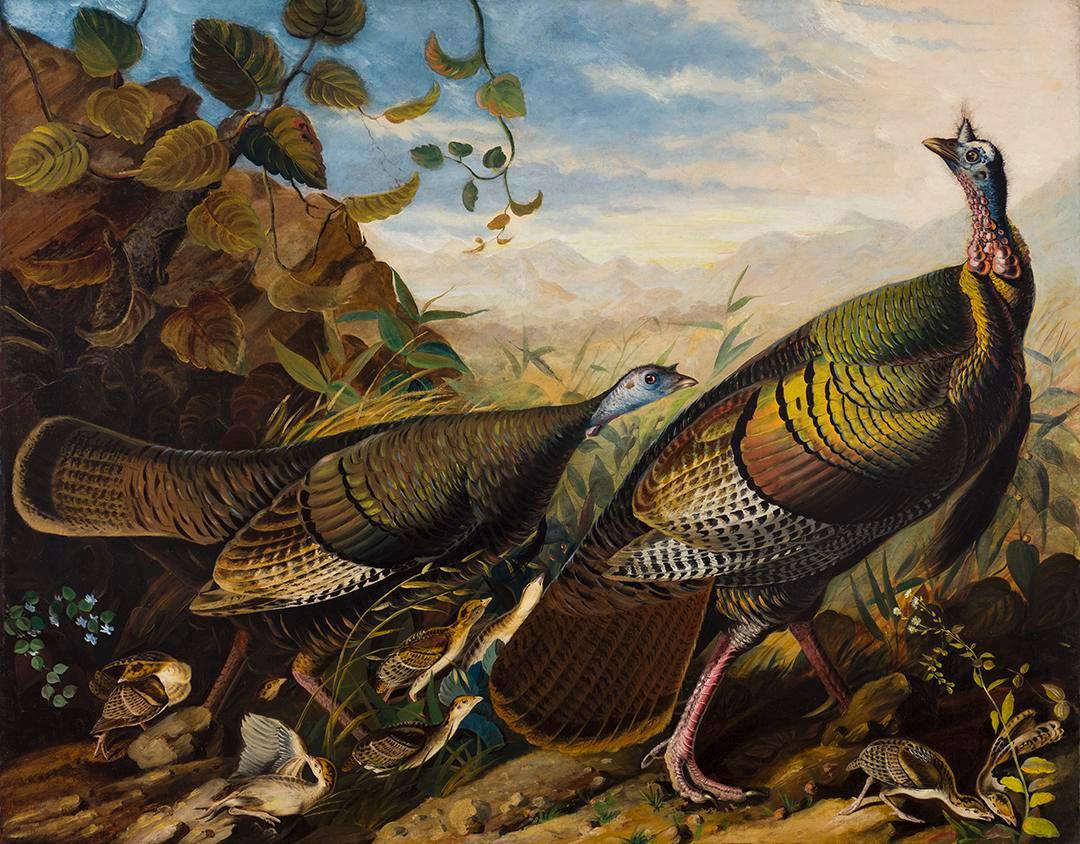By: Randy Tucker
America’s bird is the bald eagle. It’s been a symbol of American independence, military power, and patriotism for more than two centuries. The eagle is also the symbol of many European nations, nations we once considered enemies.
Benjamin Franklin wanted another bird as our national symbol. Franklin, only half in jest, suggested the turkey as the American avian image. Old Ben had his reasons. Wild turkeys are intelligent, crafty, fearsome in battle, and incredibly adaptable, all while tasting delicious.
The turkey would have served us well (pun intended) on a national level.
Hunting turkeys is a popular sport back east. Turkey hunters take on an almost manic state with camouflaged patterned gear, carefully painted camo faces, and intricate calls.
It’s a tremendous challenge to get one of these wily birds within shotgun range, amidst the heavy cover that dominate the unsettled areas east of the Mississippi River.
It’s not quite the same when you’re hunting turkeys in the west.
My first teaching job was in Lusk, Wyoming. A metropolitan area of 1,700 people, the seat of Niobrara County, the least populated county in the least populated state in America.
That’s the human population, of course, if you counted deer, antelope, doves, rabbits, turkeys, and coyotes, it’s much more densely populated.
I’d hunted waterfowl heavily before moving to Lusk, but aside from a few doves, upland game bird hunting was something new.
There are two turkey seasons in Wyoming, one coincides closely with the big game season in the fall and the other is a season unto itself, usually in April.
Hunting turkeys in Niobrara County, or anywhere in Wyoming, is as foreign an operation as can be imagined from the eastern style of hunt.
The biggest difference is the landscape. The heavily forested hardwoods, with omnipresent trickling streams, are non-existent in the largely barren foothills and plains east of the Rockies.
Sagebrush dominates the landscape, with a few drainages lined with cottonwood trees, and an occasional aspen or willow grove.
Turkeys roost in the cottonwood trees at night to avoid coyotes and bobcats.
I lived in Lusk for three years and took six gobblers during the six seasons I was able to hunt.
Eastern Wyoming is different than the western half. In the east it’s almost entirely private land, so you have to have permission to hunt. In the west, the vast majority aside from the agricultural areas along the Wind, Platte, and Big Horn Rivers is federal land.
As a teacher and coach, I had access via my student’s parents that many newcomers to the area took years to obtain.
One memorable hunt came north of Lusk, on the Cheyenne River near Mule Creek Junction. The Cheyenne was a river in name only. It did have flowing water, but in the peculiar disappearing act of small waterways in eastern Wyoming and western Nebraska, it flowed on the surface for a few miles, then submerged into a shallow aquifer, only to rise again a few miles downstream.
I had permission to hunt on the Rumney ranch. Their daughter, Lark, was one of my students, an avid leatherworking artist, and a cowgirl. The ranch house, barns, and outbuildings were situated in a bend of the Cheyenne, in as picturesque a setting as you can imagine.
Her dad Jim gave me directions where he knew there were a couple of big flocks of birds.
The droppings underneath a couple of the big cottonwood trees near the river were several inches deep and stained the tree branches above.
I started to hunt for a rooster just as I would have put the stalk on a mule deer buck.
I sighted a flock of about 75 birds 600 yards away. Carefully stalking them, I got within 80 yards before they noticed me. From then on they maintained that distance.
They crossed a shallow spot in the river and moved up over a small hill on the west side. I fancied myself a fast hunter in those days. I quickly crossed the river, raced up the hill on the other side, and to my amazement spotted the birds as they disappeared over the next rise, at least a half-mile away.
Disappointed, I walked back down towards my truck. Jim met me there. “I watched you chase those birds,” he said. “You’d have to be Jesse Owens to have a chance. I tried to catch some on horseback one day and they played out my horse.”
That was the hunt for that morning, but Jim suggested I come back that afternoon.
He was right; there were birds everywhere just 45 minutes before sunset.
This time I spotted a big rooster in the distance. Instead of trying to run into position, I crawled slowly 10 to 15 yards at a time, sat still for a minute or two, then advanced.
After 20 minutes, the gobbler was only 30 yards out. I rolled into a kneeling position and hit him with BB shot from my 12 gauge Remington 870. One shot, one bird.
He was a big bird, weighing in at 23 pounds. I still have his tail fan and 11-inch beard mounted on the wall of my office.
My wife Sue and I celebrated our first Thanksgiving together with that rooster the prime course. It was a little drier than domesticated fowl, but much more flavorful, at least to me, since I had worked more than a shopping cart to get it to the table.
Old Ben was right: these are noble birds, ones that I always stop in my travels across the state and shoot with a camera when not in season.
Randy Tucker is a retired history teacher and freelance writer from western Wyoming. He has a lifetime of experience in farming, ranching, hunting and fishing in the shadow of the Wind River Mountains. Contact him at [email protected].
Photo credit: John James Audubon – Wild Turkey Cock, Hen and Young – 2013.44 – Crystal Bridges Museum of American Art

